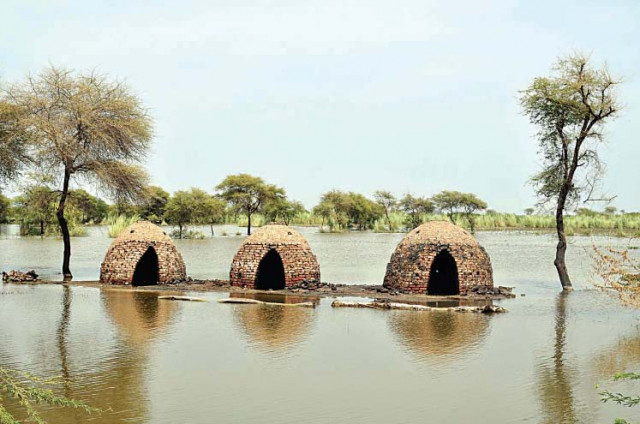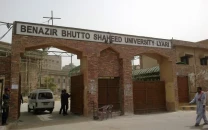Apres le deluge: With treatment plants, Badin will be granted drinking water, at last
Most of the water channels near the district are filled with water but it is not fit to use.

Apres le deluge: With treatment plants, Badin will be granted drinking water, at last
At last, a fraction of Badin district will be supplied clean drinking water. The rains, which broke the back of a fragile irrigation and drainage system, swamped the entire city for two weeks, but now the district administration is installing six water-treatment plants to process up to 600,000 gallons of clean water every day.
“Although Badin’s demand for water is 2.5 million gallons a day, with the help of a private company we are doing our part to alleviate the situation,” said the Public Health Department’s executive engineer, Manohar Lal. Two of the plants have been installed and the remaining four will take another 48 hours.
The water supply system in Badin is limited to urban localities while people in the rural areas, who constitute a majority, consume water directly from the small channels which emanate from three big canals - Phuleli, Akram and Guni.
These smaller channels, which serve as a life and irrigation source for the people, contain water from the agricultural fields which is considered harmful for human health. “Water, being consumed from the distributaries and watercourses, is high in turbidity, odour, acidity and contains dissolved solids,” said Abid Hussain, a doctor who is working at a Caritas Pakistan medical camp in Badin.
The camp, which tends to 200 to 250 patients per day, has recorded that over 40 per cent of the medical cases are related to drinking water. “The number of people diagnosed with scabies, cholera, skin diseases and typhoid is mounting by the day,” the doctor added. He fears that these diseases will continue to persist if the situation is not altered.
Badin has a network of 123 small fresh water channels, fed by the three canals, and 118 saline water drains which fall either in the Left Bank Outfall Drain or into the sea, after snaking through every nook and cranny of the district. The Sindh Irrigation and Drainage Authority (SIDA) closed the floodgates of all the three canals on August 9. These canals spring from Kotri barrage and irrigate Badin, according to SIDA’s spokesman, Hizbullah Mangrio. Consequently, all the channels were filled with water that was not fit for consumption, and it was drained from the agricultural fields.
“We have released water in Akram Canal from Kotri barrage,” says Habib Ursani, the director of the Left Bank Canal Area Water Board, which controls the irrigation system connected to the Kotri Barrage. He expects the water to reach Qazia Wah, connected to Akram Canal, and on whose different locations the Public Health Department is installing the treatment plants, by Thursday.
Irrigation Rehabilitation
The rehabilitation work, which will be preceded by assessments on the damaged irrigation and drainage system, will only start once the water level has subsided. It is difficult to give a date, officials said.
SIDA can also not tell at how many points breaches and spillovers have occurred. “We can only say that the system has been partially damaged,” says Habib Ursani. SIDA officials have hinged their hopes on a drop in the water level in LBOD in which they will discharge all other drains and channels.
As a World Bank consultant, Muhammad Ehsan, visited the LBOD to assess the damages on Wednesday, its level fell just by 1.2 feet to 14.8 feet in over two weeks at RD-245, SIDA’s base camp.
Published in The Express Tribune, August 25th, 2011.



















COMMENTS
Comments are moderated and generally will be posted if they are on-topic and not abusive.
For more information, please see our Comments FAQ